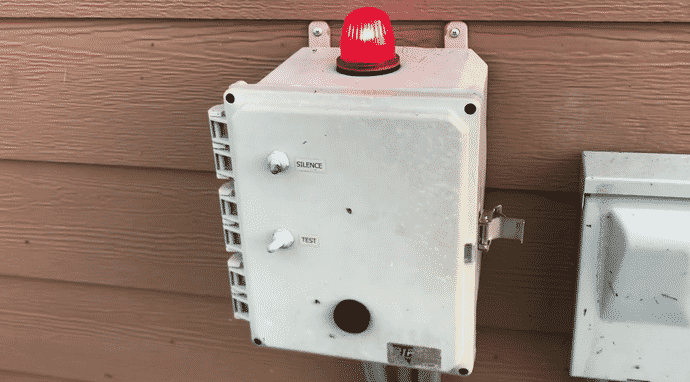You’re probably familiar with those red lights that sometimes appear on the control panel of your septic system, but do you know what they actually mean? In this article, we’ll unravel the mystery behind the red light on your septic system and explain its significance. By understanding the red light’s message, you can ensure the health and functionality of your septic system, leading to a happier and more worry-free household. So, let’s discover the secrets behind that illuminating red light!

Common Causes of Septic System Alarms
High Water Level
One of the common causes of septic system alarms is a high water level in the tank. This can occur when there is a blockage or malfunction in the system, causing the wastewater to not be properly discharged. When the water level in the tank exceeds a certain point, the septic system alarm is triggered, indicating that there is an issue that needs to be addressed.
Leak in the System
Another cause of septic system alarms is a leak in the system. This can occur due to aging or damaged pipes, cracks in the tank, or faulty connections. A leak in the septic system can result in the groundwater being contaminated with sewage, leading to potential health hazards and environmental concerns. When a leak is detected, the septic system alarm will be activated to alert you to the problem.
Blocked Drainfield
A blocked drainfield is another common cause of septic system alarms. The drainfield is responsible for the final treatment and disposal of the wastewater from the septic tank. If the drainfield becomes blocked or saturated, it can lead to a backup of wastewater in the septic tank. This can trigger the septic system alarm, indicating that there is a blockage in the drainfield that needs to be addressed.
Faulty Pump
A faulty pump can also activate the septic system alarm. The pump is responsible for pumping the wastewater from the septic tank to the drainfield or to a treatment system. If the pump malfunctions or fails to operate properly, it can result in the septic tank filling up and triggering the alarm. A faulty pump should be repaired or replaced as soon as possible to prevent further issues with the septic system.
Electrical Malfunction
Lastly, an electrical malfunction can cause the septic system alarm to go off. This can occur if there is a problem with the electrical wiring or control panel of the septic system. If the electrical components of the system fail to function correctly, it can lead to the septic system alarm being activated. It is important to have any electrical issues with the septic system addressed by a professional to avoid further complications.
Impact of Red Light on Septic System
Warning Sign
When the red light on your septic system is illuminated, it serves as a warning sign that there is a problem that requires your attention. The red light is designed to grab your attention and alert you to the fact that there is an issue with your septic system. Ignoring this warning sign can lead to more significant problems down the line.
Possible Emergencies
The red light on your septic system can indicate that there is a potential emergency situation. This can include issues such as a high water level, a major leak, or a malfunctioning pump. These emergencies require immediate attention to prevent further damage to your septic system and potential health hazards.
Need for Immediate Attention
When the red light on your septic system is on, it is crucial to give it immediate attention. Ignoring the problem or assuming it will resolve itself can be detrimental to the overall health and functionality of your septic system. Taking swift action can help prevent further damage and costly repairs.
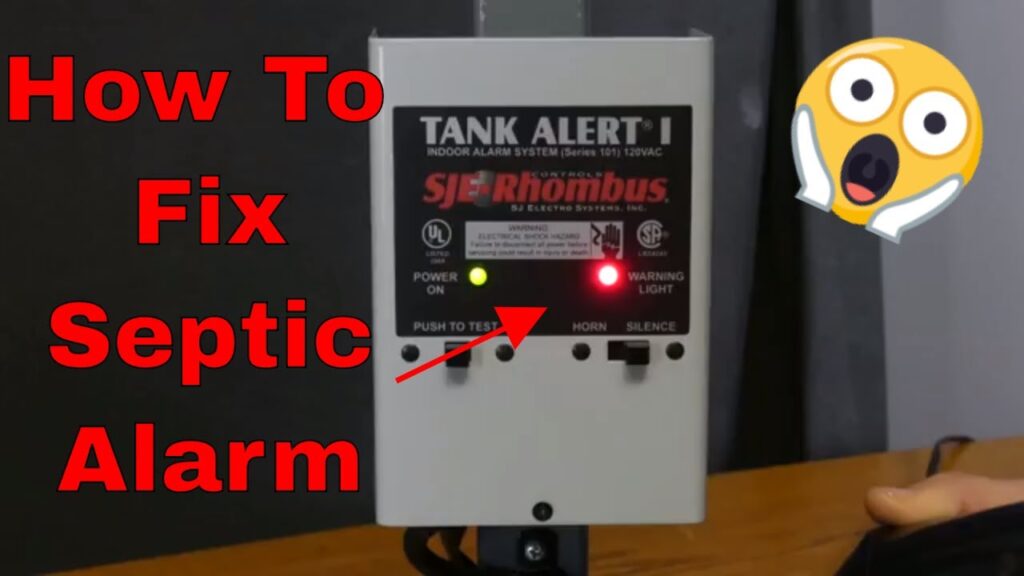
Understanding the Red Light on Septic System
Function of Septic System Alarms
Septic system alarms, including the red light, serve as a monitoring mechanism to alert homeowners to any issues with their septic system. These alarms are designed to detect abnormalities in the system and notify you when there is a problem. The red light specifically highlights that something requires your attention.
How the Red Light Works
The red light on your septic system is connected to sensors that monitor the various components of the system. When an issue is detected, such as a high water level or a malfunctioning pump, the sensors trigger the red light to turn on. This visual alert signals that there is a problem within your septic system that needs to be addressed.
Different Alarm Types
There are various types of septic system alarms available, each with its own way of indicating problems. The red light is a common feature of many septic system alarms, but there may also be other types of alarms, such as audible alarms or wireless alert systems. It is important to familiarize yourself with the specific type of alarm you have and understand how it operates.
Troubleshooting a Red Light on Septic System
Check the Display Panel
Start troubleshooting the red light on your septic system by checking the display panel. Look for any error codes or messages that may provide insight into the issue. Familiarize yourself with the display panel’s functions and consult the manual if needed.
Inspect Alarm Wiring
Inspect the wiring connected to the septic system alarm, ensuring that all connections are secure and undamaged. Loose or damaged wiring can cause the alarm to malfunction or display false warnings. If any issues are found, it may be necessary to repair or replace the wiring.
Verify Electrical Supply
Ensure that the septic system is receiving a proper electrical supply. Check the circuit breaker or fuse connected to the system and make sure it is not tripped or blown. If the power supply is interrupted, the septic system alarm may not function correctly.
Check Pump Operation
If the red light is on, it is essential to check the operation of the septic system’s pump. Listen for any unusual sounds coming from the pump and verify that it is pumping wastewater as intended. A malfunctioning pump can trigger the alarm and may require repair or replacement.
Evaluate Drainfield Performance
Assess the performance of the drainfield, checking for signs of a blockage or saturation. Examine the area surrounding the drainfield for any standing water or foul odors. If there are indications of a problem, such as slow draining or sewage backup, it is crucial to address the issue promptly.
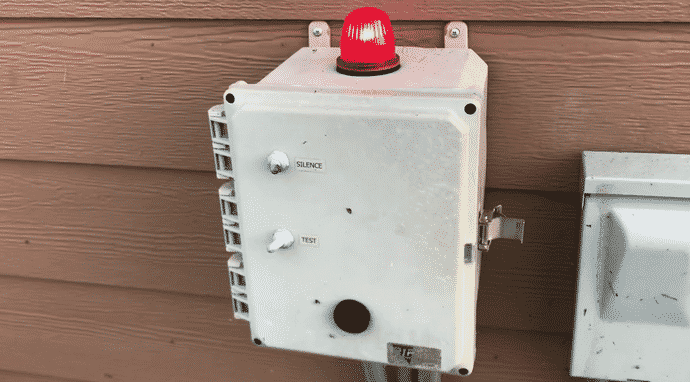
Steps to Take if the Red Light is On
Do Not Panic
If the red light on your septic system is on, try not to panic. While it is important to take action, panicking will not solve the problem. Take a deep breath and approach the situation calmly and methodically.
Contact a Professional
To ensure the proper diagnosis and resolution of the issue, it is advisable to contact a professional septic system service provider. They have the expertise and equipment necessary to assess the problem accurately and provide the appropriate solutions.
Minimize Water Usage
While waiting for the professional to arrive, it is prudent to minimize water usage in your household. Excessive water usage can exacerbate the problem and put additional strain on your septic system. Avoid activities such as taking long showers or doing multiple loads of laundry.
Avoid Flushing Solid Waste
To prevent further issues with your septic system, avoid flushing solid waste down the toilet. This can contribute to clogs and backups, making the situation worse. Dispose of solid waste properly in the trash to minimize the strain on your septic system.
Preventive Measures to Avoid Red Light on Septic System
Regular Maintenance
Implement a regular maintenance schedule for your septic system. This includes routine inspections, pumping, and cleaning as recommended by professionals. Regular maintenance helps identify and address potential issues before they escalate and trigger the septic system alarm.
Proper Waste Disposal
Be mindful of what you flush down the toilet or drain. Avoid disposing of items that can clog or damage your septic system, such as grease, oil, feminine hygiene products, or chemical cleaners. Proper waste disposal practices can significantly reduce the likelihood of encountering problems with your septic system.
Conserving Water
Conserving water in your household can help alleviate the strain on your septic system. Simple practices such as fixing leaks, using efficient appliances, and being mindful of water usage can make a significant difference. Conserving water also contributes to environmental sustainability.
Inspecting Drainfield Regularly
Regularly inspect the drainfield for any signs of problems. Look for soggy areas, foul odors, or excessive vegetation, as these can indicate issues with the drainfield. Early detection of drainfield problems can prevent the red light on your septic system from illuminating.
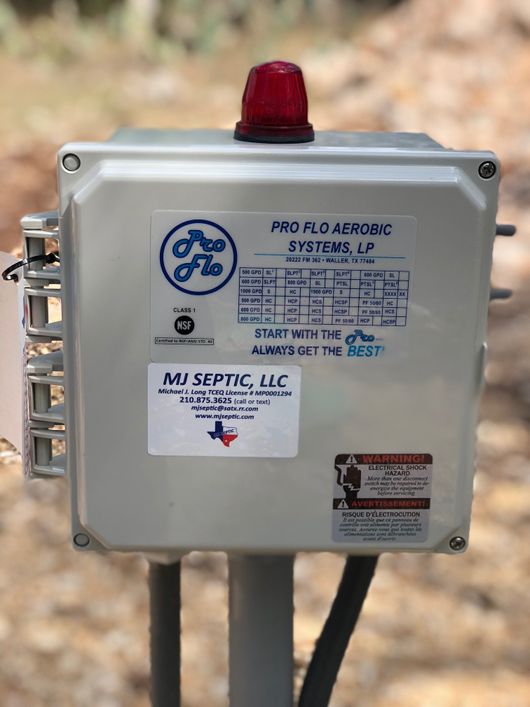
Signs Indicating the Need for Septic System Maintenance
Slow Drains
If you notice that your sinks, toilets, or showers are draining slowly, it is often an indication that your septic system requires maintenance. Slow drains can result from a clogged pipe or a failing septic system.
Foul Odors
Foul odors emanating from your drains or the area around your septic tank are a clear sign that there is a problem. This can be due to a leak, a blockage, or an issue with the wastewater treatment process. Prompt attention is necessary to prevent further complications.
Standing Water
The presence of standing water in your yard, particularly around the drainfield or the septic tank, can be a sign of a septic system issue. It indicates that the wastewater is not being properly absorbed and is pooling on the surface. This requires immediate action to avoid potential health hazards.
Unusual Sounds
If you hear gurgling or bubbling sounds coming from your drains, it is often an indication of a septic system problem. These sounds can be caused by a blockage or a malfunctioning pump. Unusual sounds should not be ignored and should be investigated promptly.
Lush Green Grass
While having a lush, green lawn may sound appealing, it can be a sign of a septic system issue. If the drainfield is not properly absorbing wastewater, it can lead to an overgrowth of vegetation in that area. Excessive green grass or plants near the drainfield may indicate a problem with your septic system.
Dangers of Ignoring a Red Light on Septic System
Costly Repairs
Ignoring a red light on your septic system can lead to more significant and costly repairs in the future. What may seem like a small issue initially can escalate into a major problem if left unaddressed. Taking immediate action when the red light is on can help minimize repair costs.
Health Risks
A malfunctioning septic system can pose various health risks. Wastewater backup, leaks, or contamination can expose you and your family to harmful bacteria and pathogens. Promptly addressing septic system issues prevents potential health hazards and ensures a safe living environment.
Environmental Concerns
A properly functioning septic system plays a crucial role in protecting the environment. When a septic system is not functioning correctly, it can lead to the contamination of groundwater and nearby bodies of water. This contamination can harm aquatic life and impact the overall ecosystem. Taking care of your septic system helps preserve the environment.
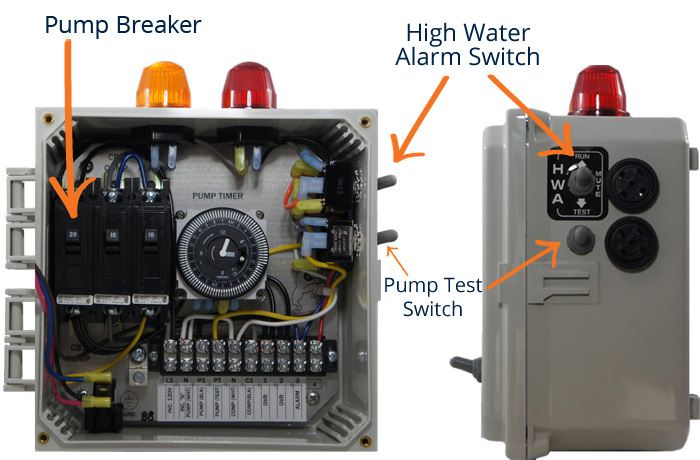
Septic System Alarm FAQs
What Should I Do If the Alarm Sounds?
If your septic system alarm sounds, follow these steps:
- Check the alarm panel and take note of any error codes or messages.
- Contact a professional septic system service provider to assess the problem.
- Minimize water usage in your household.
- Avoid flushing solid waste down the toilet.
- Follow the guidance and recommendations provided by the professional to address the issue effectively.
How Often Should I Have My Septic System Inspected?
Regular inspections are essential for the proper maintenance of your septic system. It is generally recommended to have your septic system inspected annually. However, the frequency of inspections may vary depending on factors such as the size of your household, the usage of the system, and local regulations. Consult a professional septic system service provider to determine the appropriate inspection schedule for your specific needs.
Can I Reset the Alarm Myself?
In most cases, it is not recommended to reset the alarm yourself. The alarm is designed to alert you to potential issues with your septic system, and resetting it without addressing the underlying problem can lead to further complications. It is best to contact a professional septic system service provider to diagnose and resolve the problem properly.
Conclusion
The red light on your septic system serves as a crucial warning sign. Understanding the common causes of septic system alarms and the impact of a red light can help you identify and address issues promptly. Troubleshooting the red light, taking appropriate steps when it is on, and implementing preventive measures can help minimize the need for costly repairs and ensure the longevity and proper functioning of your septic system. Regular maintenance, proper waste disposal, and routine inspections are key to avoiding red lights and maintaining a healthy septic system. Remember to always consult a professional for any septic system issues to ensure proper diagnosis and resolution.
